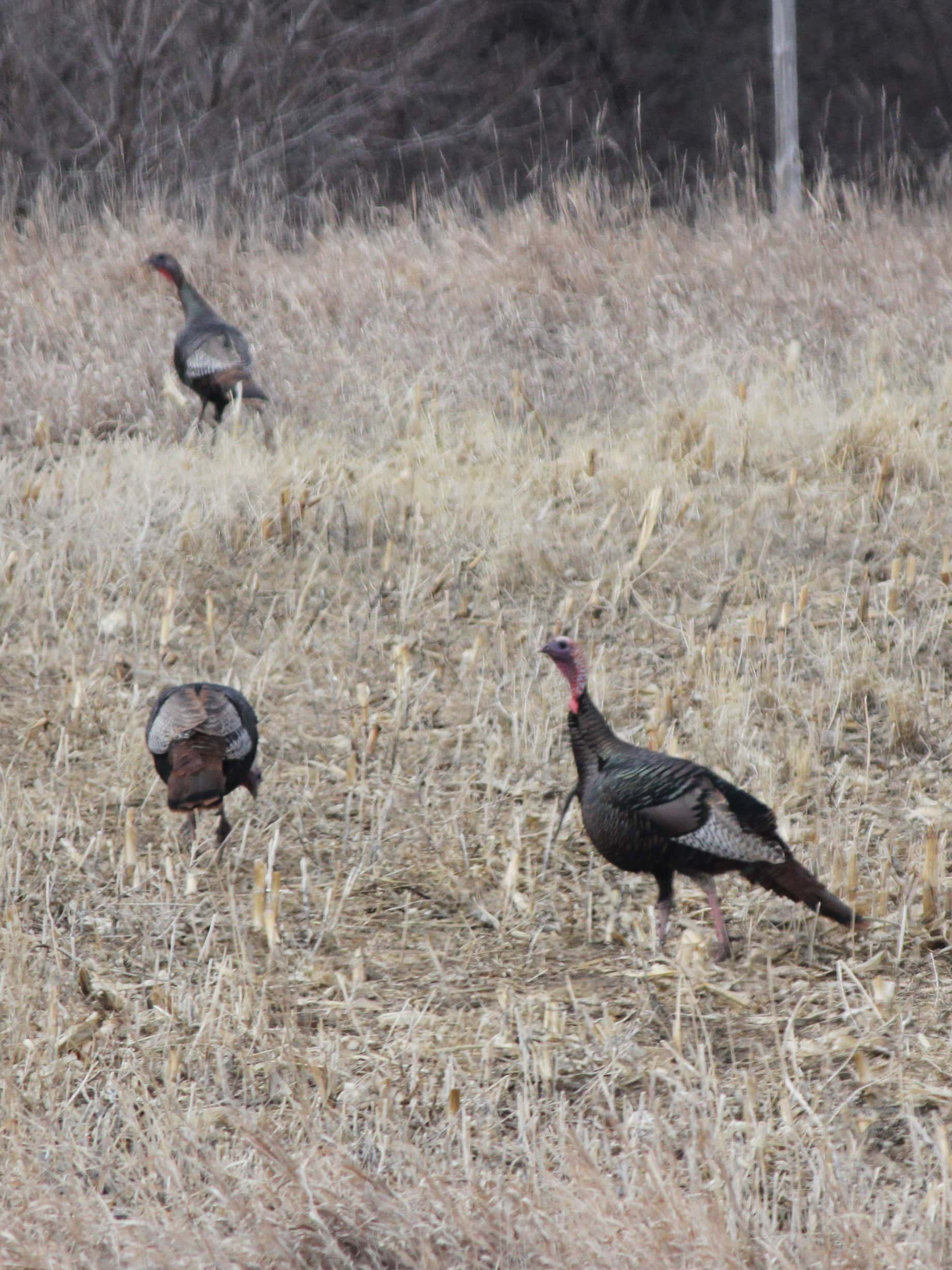
Warming Up. A trio of turkeys work the edge of a cut field in spring. Simonson Photo
By Nick Simonson
In that gap between the last snow melting and the sure signs of spring like budding trees and greening grass, the tom turkey is king of the corridor throughout the rills and rivers of the region.
For those starting in turkey hunting or looking to increase their success in harvesting a gobbler this season, keying in on the basics, such as knowing the times and patterning places and portions of the season where turkeys are most active will make for a memorable spring.
With early spring conditions sweeping over much of the upper Midwest, where there is little snow cover, turkeys are already showing signs of activity and the toms are getting restless. While the prime breeding season – complete with the flamboyant strutting displays and competitive action between toms vying for the attention of hens – won’t hit until late April, NDG&F Upland Biologist R. J. Gross has tips for hunters for locating birds no matter the time of the season they’re able to get into the field, and it all starts with location.
“You need those riparian corridors and places like the pine forest,” Gross relates on the best places for hunters to target “and the turkeys are responding there, they’ve had a few years of good conditions and have responded with good production,” he continues in relation to birds in the western stretches of North Dakota, where that habitat is plentiful and recent winters have been mild.
Some scouting ahead of the season is important in punching a spring turkey tag and patterning birds once a flock is located is key in finding a place to set up a decoy and take a position to intercept them during their daily routines. Utilizing camouflage and staying as still as possible, or better yet, getting concealed in a brushed-in ground blind, will help hunters keep from spooking turkeys moving through their area.
“Find where they’re roosting, watch where they go when they come down; the hens will usually come down first and the gobblers and jakes will follow them wherever they go,” Gross relates, “they usually go to food right away, so try and get in between their roost site and where they’re going right away in the morning,” he concludes.
Typically, more success for gobblers can be found later in the season as they become more responsive to hen calls and more aggressive toward decoys displayed in a field. This is due in largest part to the fact that the prime breeding season takes place in mid-to-late April, so when a tom hears the soft cluck of a hen call, he is looking for the more limited opportunity to court an unbred bird. With a hen decoy deployed and a few well-timed calls, the latter stretch of the season can produce fast action and responsive toms.
“The breeding season is all depending on photoperiod or the length of daylight during the day,” Gross explains, “usually later in the year is better, a lot of the hens have already been bred; they don’t want anything to do with the toms anymore so the toms are getting more lonely so they hear a hen cluck from your call they get a little more excited and a little bit more ambitious to come check out what it is,” he relates.
A few tags for select units remain in North Dakota heading into the season and can be purchased by clicking the “Buy and Apply” tab at gf.nd.gov.
The North Dakota spring turkey season starts on Apr. 11 and closes on May 17.
South Dakota’s archery turkey season starts Apr. 4, with the general season beginning April. 11; both run until May 31 with more information at: gfp.sd.gov/turkey/

